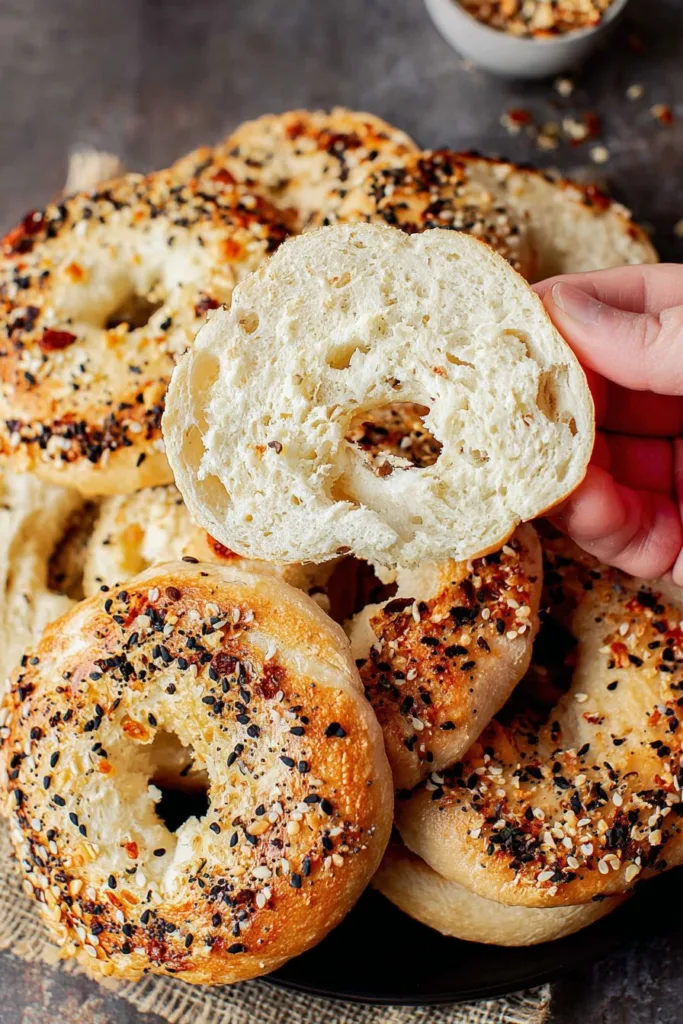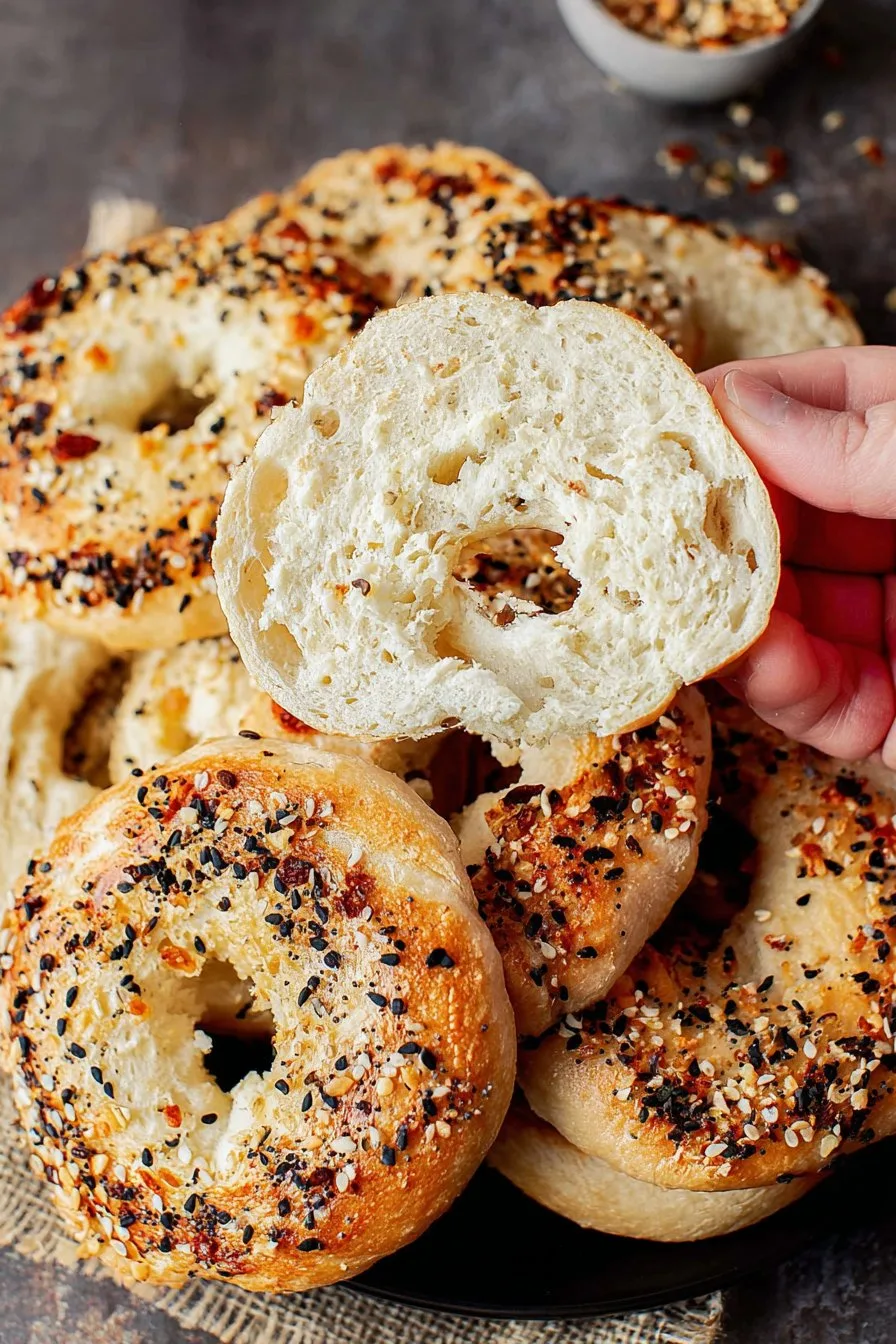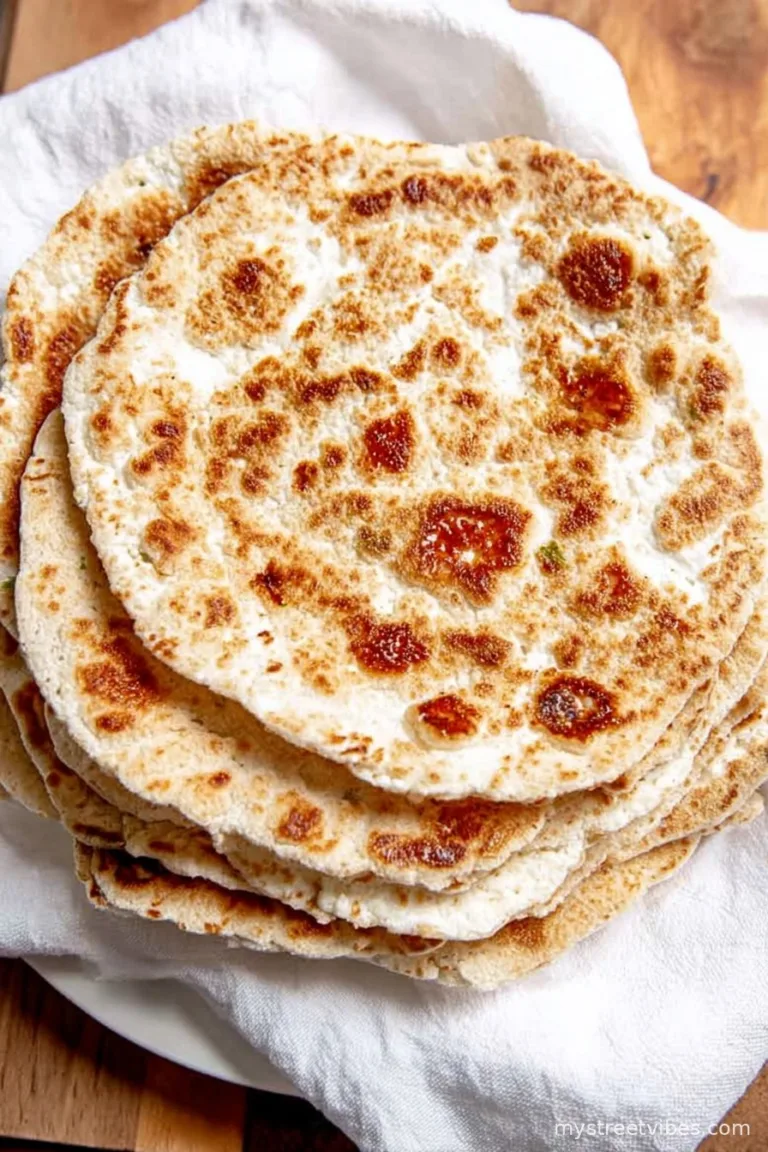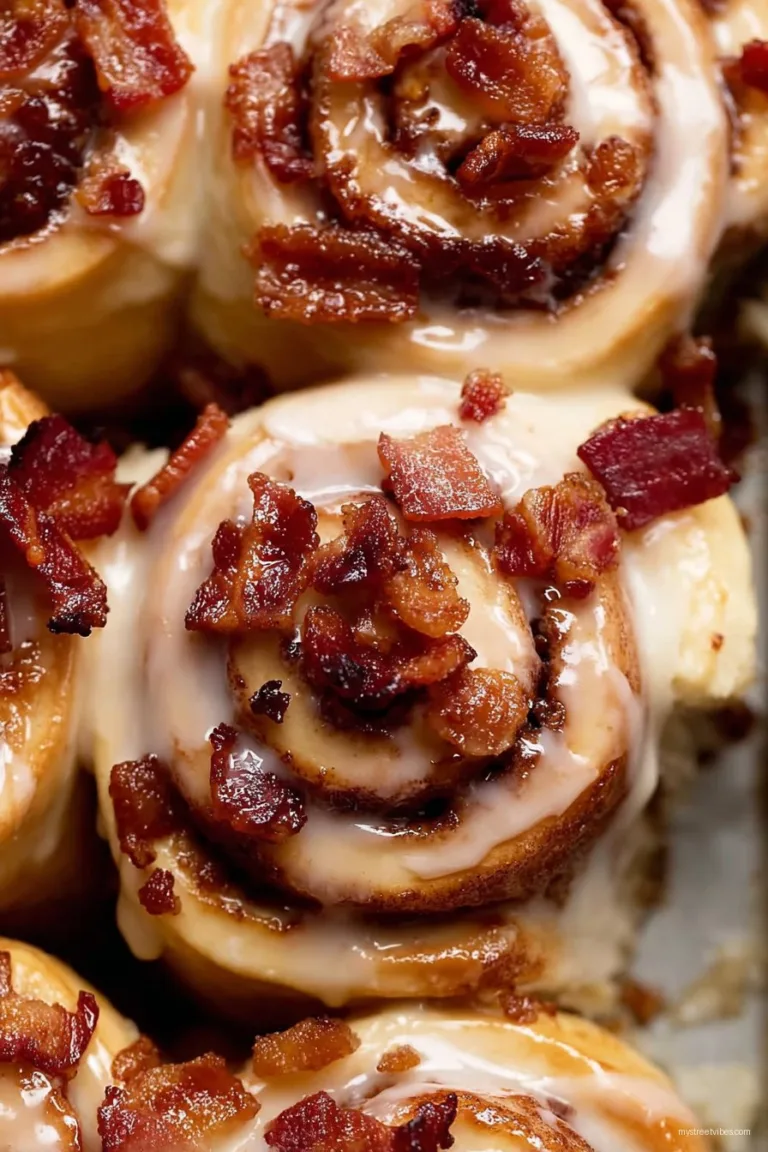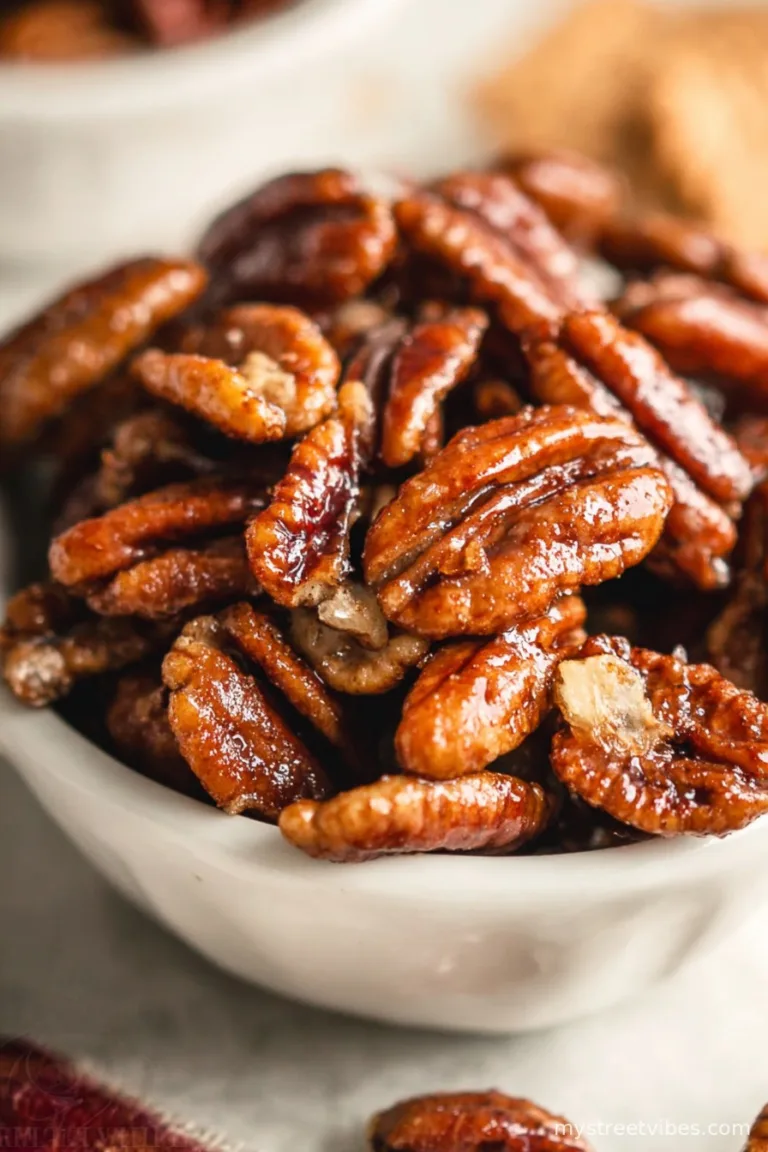Hey y’all! If you’re on the hunt for a breakfast or snack that’s as satisfying as it is wholesome, these High-Protein Cottage Cheese Bagels are just what you need. Not only are they deliciously chewy and golden, but they’re also packed with protein to keep you fueled all day long. Whether you’re prepping for a busy week, feeding a hungry family, or just craving something homemade, this recipe has you covered. Let’s get cooking!
Why You’ll Love This High-Protein Cottage Cheese Bagels Recipe
- Each bagel is loaded with protein, making it ideal for a filling breakfast or post-workout snack.
- Made with simple, wholesome ingredients you probably already have in your kitchen.
- No yeast or boiling required—just mix, shape, and bake!
- Chewy on the outside and soft on the inside for that classic bagel texture.
- Customizable with your favorite toppings or mix-ins.
Ingredients for High-Protein Cottage Cheese Bagels
- 1 cup (225g) low-fat cottage cheese
- 1 large egg
- 1 1/2 cups (180g) self-rising flour (or 1 1/2 cups all-purpose flour + 2 tsp baking powder + 1/2 tsp salt)
- 1 scoop (30g) unflavored or vanilla whey protein powder
- 1 tablespoon honey or maple syrup (optional, for subtle sweetness)
- 1/2 teaspoon salt
- 1 egg, beaten (for egg wash)
- Optional toppings: sesame seeds, poppy seeds, Everything Bagel seasoning
Directions: How to Make High-Protein Cottage Cheese Bagels
Step 1: Prepare the Dough
- Preheat your oven to 375°F (190°C). Line a baking sheet with parchment paper.
- In a food processor or blender, blend 1 cup cottage cheese and 1 egg until smooth and creamy.
- Pour the cottage cheese mixture into a large mixing bowl. Add self-rising flour, protein powder, honey (if using), and salt. Stir until a sticky dough forms.
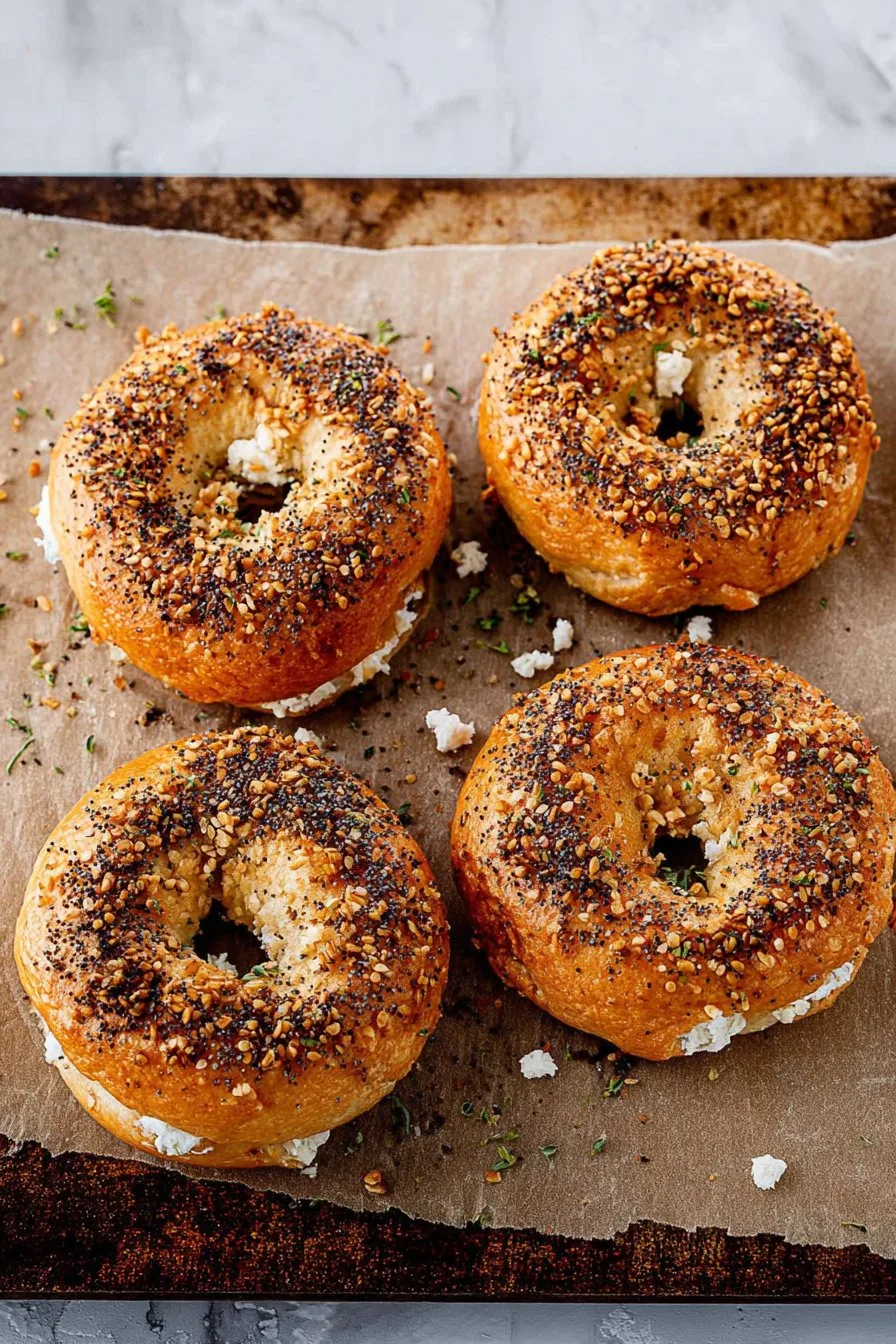
Step 2: Shape the Bagels
- Lightly flour your hands and work surface. Divide the dough into 4 equal portions.
- Roll each portion into a ball, then use your finger to poke a hole in the center and gently stretch into a bagel shape.
Step 3: Add Egg Wash and Toppings
- Place bagels on the prepared baking sheet. Brush tops with the beaten egg for a glossy finish.
- Sprinkle with your favorite bagel toppings, such as sesame seeds, poppy seeds, or Everything Bagel seasoning.
Step 4: Bake to Perfection
- Bake bagels for 22-25 minutes, or until golden brown and firm to the touch.
- Let cool for a few minutes on a wire rack before slicing and enjoying.
Prep Time: 10 minutes
Total Time: 35 minutes
Notes for Making the Best High-Protein Cottage Cheese Bagels
- If your dough feels too sticky, add a tablespoon of flour at a time until it’s workable, but avoid over-flouring.
- For extra flavor, try blending in a little garlic powder or dried herbs to the dough.
- Check out these high-protein bagel tips for more inspiration.
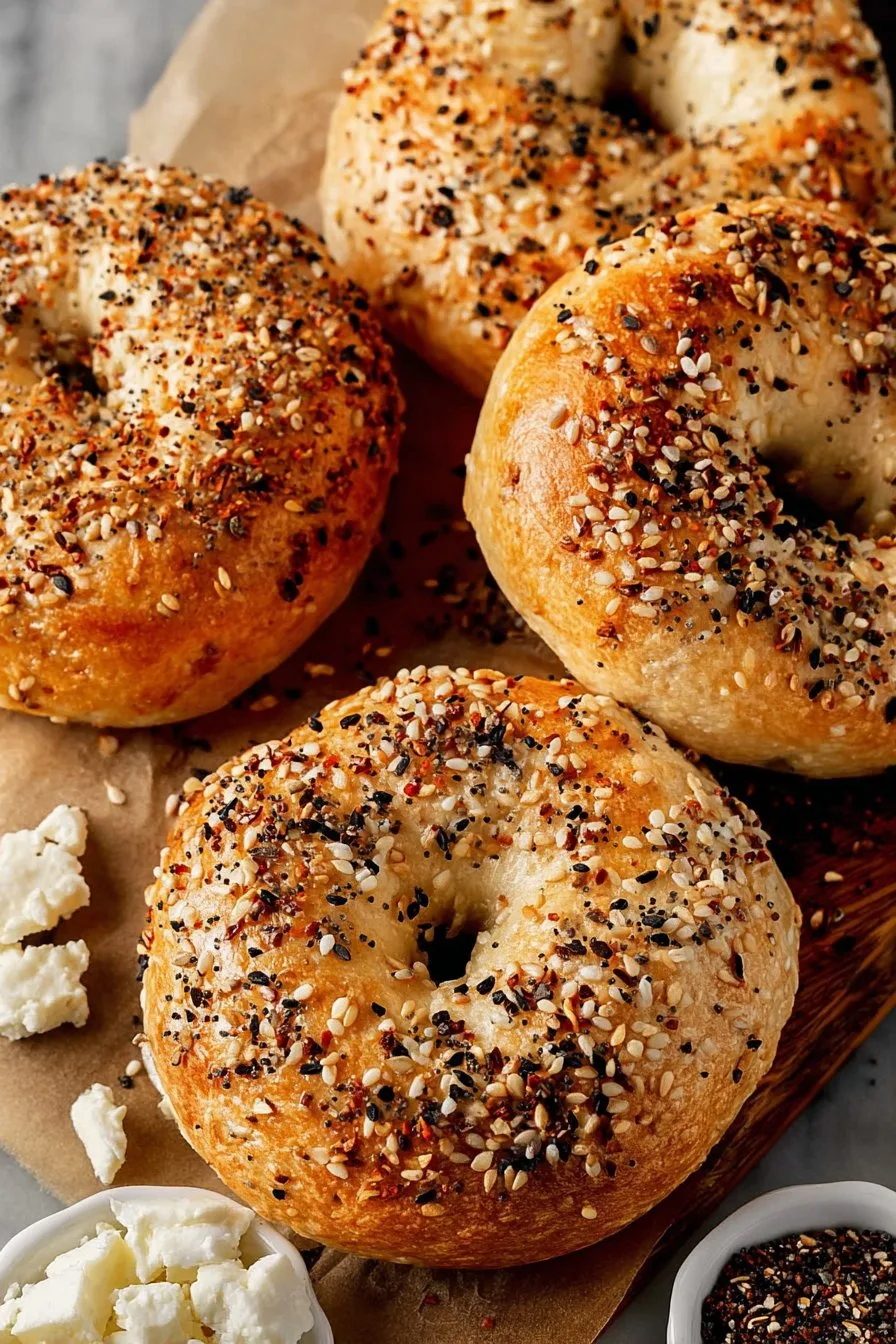
Variations: Fun Twists on High-Protein Cottage Cheese Bagels
- Cheddar Jalapeño: Add 1/2 cup shredded cheddar and 1 chopped jalapeño to the dough.
- Cinnamon Raisin: Mix in 1/2 teaspoon ground cinnamon and 1/4 cup raisins for a sweet twist.
- Herb & Garlic: Blend in 1 teaspoon dried Italian herbs and 1/2 teaspoon garlic powder for a savory flavor.
Required Equipment for High-Protein Cottage Cheese Bagels
- Food processor or blender
- Mixing bowl
- Baking sheet
- Parchment paper
- Pastry brush (for egg wash)
Storage Instructions for High-Protein Cottage Cheese Bagels
Store cooled bagels in an airtight container at room temperature for up to 2 days, or in the refrigerator for up to 5 days. For longer storage, freeze bagels in a zip-top bag for up to 2 months—just thaw and toast before serving.
Suggested Pairings and Serving Recommendations
- Top with whipped cream cheese, smoked salmon, and fresh dill for a classic combo.
- Serve with scrambled eggs and sliced avocado for a protein-packed breakfast.
- Pair with a smoothie or fresh fruit for a balanced meal.
Pro Tips for Perfect High-Protein Cottage Cheese Bagels
- Make sure to blend the cottage cheese smooth to avoid a lumpy dough.
- Don’t overmix—stir just until the dough comes together for the best texture.
- For more insights on baking with protein powder, check out this guide from Bon Appétit.
FAQ: High-Protein Cottage Cheese Bagels
- Can I make these bagels gluten-free?
- Yes! Substitute the self-rising flour with a 1:1 gluten-free flour blend and add 1 1/2 teaspoons gluten-free baking powder.
- Which type of cottage cheese is best?
- Low-fat or full-fat cottage cheese both work well; just make sure it’s not too watery for the best dough consistency.
- Can I double the recipe?
- Absolutely! Simply multiply all of the ingredients by two for a larger batch—perfect for meal prep or sharing.
For more on cottage cheese nutrition, see this comprehensive Healthline article.
Ingredients
- 1 cup low-fat cottage cheese
- 1 large egg
- 1 1/2 cups all-purpose flour
- 2 teaspoons baking powder
- 1/2 teaspoon salt
- 1 tablespoon honey
- 1 tablespoon olive oil
- 1 tablespoon everything bagel seasoning (optional)
Instructions
-
1Preheat your oven to 375°F (190°C) and line a baking sheet with parchment paper.
-
2In a blender or food processor, blend the cottage cheese and egg until smooth.
-
3In a large bowl, whisk together the flour, baking powder, and salt.
-
4Add the cottage cheese mixture, honey, and olive oil to the dry ingredients. Mix until a soft dough forms.
-
5Divide the dough into 4 equal pieces. Shape each piece into a bagel and place on the prepared baking sheet. Sprinkle with everything bagel seasoning if desired.
-
6Bake for 22-25 minutes, or until golden brown. Allow to cool slightly before serving.
Approximate Information for One Serving
Nutrition Disclaimers
Number of total servings shown is approximate. Actual number of servings will depend on your preferred portion sizes.
Nutritional values shown are general guidelines and reflect information for 1 serving using the ingredients listed, not including any optional ingredients. Actual macros may vary slightly depending on specific brands and types of ingredients used.
To determine the weight of one serving, prepare the recipe as instructed. Weigh the finished recipe, then divide the weight of the finished recipe (not including the weight of the container the food is in) by the desired number of servings. Result will be the weight of one serving.
Did you make this recipe?
Please consider Pinning it!!
